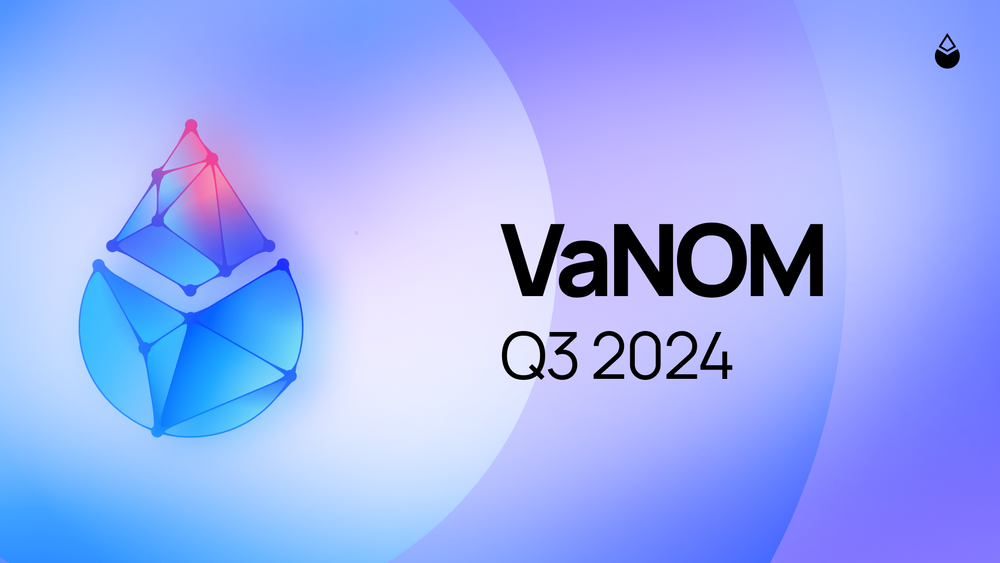Lido Validator & Node Operator Metrics: Q3 2024

TLDR:
- In Q3 2024, SimpleDVT module added over 130 new Node Operators, bringing the total to 236 unique Node Operators.
- Client diversity improved, with Geth usage decreasing steadily while Nethermind and Besu gained traction.
- Galaxy Digital and Chorus One adopted the Reth client, operating 10k validators in different configurations, where Reth is either used in conjunction with other EL clients or as a failover.
Check the full Q3 VaNOM report: app.hex.tech/8dedcd99-17f4-49d8-944e-4857a355b90a/app/3f7d6967-3ef6-4e69-8f7b-d02d903f045b/latest
Expanding Operator Base with SimpleDVT
During Q3 2024, Lido’s operator set expanded significantly through the launch of the SimpleDVT module. The number of node operators running active keys increased from 35 to over 236. This broader inclusion of smaller operators running fewer keys has influenced the Gini coefficient, which has now increased to 0.8452 across all modules.
This rise in the Gini coefficient reflects the protocol's larger scope and signals the early stages of a broader decentralization effort, with more operators gradually joining the network and contributing to its evolving distribution.

Client Diversity & Infrastructure Evolution
The Q3 2024 data shows a clear trend in client diversity, with Geth usage gradually decreasing quarter on quarter from over 90% to 35.6%. This steady decline highlights the increasing adoption of alternative clients like Nethermind and Besu. By Q3, Besu reached 20.3% and Nethermind 38.9%, marking a significant shift in client usage. The diversification of execution layer clients strengthens the overall resilience of the network, reducing reliance on a single client and supporting decentralization and client diversity goals across the operator set.
Galaxy Digital operates 8,460 validators in a 1-out-of-3 hybrid configuration, utilizing Reth alongside two other EL clients. Chorus One has incorporated Reth as a failover option for a portion of their validators. Additionally, several operators are currently assessing the integration of Reth into their setups for implementation in the coming quarters. Although these numbers may seem small, this early adoption by major operators signals growing interest in Reth, paving the way for broader client diversity across the network.

Metrics for Stake Distribution
The Curated Module, through which the majority of stake (99.5% as at end of Q3) is operated via the Lido protocol, continues to feature a well-distributed validator set, averaging 8,459 keys per node operator. Meanwhile, the SimpleDVT module—designed to support smaller operators—currently has a capped share limit of 4%, though only 0.45% of the total stake is actually utilized, spread across 222 smaller operators with 1,365 validators.
The module share limits significantly impact stake distribution metrics when calculated across both modules. When combined with the larger Curated Module, the aggregated Gini coefficient appears higher, reflecting an uneven stake distribution. However, this discrepancy highlights the structural differences between the large, established operators in the Curated Module and the newer, smaller entrants in the SimpleDVT module, providing essential context for interpreting decentralization progress across modules.
Certification Inventory
As of Q2 2024, a new section has been added to VaNOM that inventories certifications held by node operators, offering insights into their commitment to security and compliance. This section details common certifications like ISO 27001 and SOC 2, Type I and II, providing users with a transparent view of the operational standards upheld by each operator.
ISO 27001 is an internationally recognized standard for information security management systems, demonstrating that an organization has robust processes in place to manage and protect sensitive information. SOC 2, on the other hand, is an auditing standard that assesses how organizations safeguard customer data. SOC 2 Type I evaluates the suitability of design controls at a specific point in time, while Type II goes a step further, verifying the effectiveness of these controls over an extended period. By showcasing these certifications, the report enables users to better understand the security posture of node operators and their dedication to maintaining high compliance standards.
Censorship Resistance Index (CRI)
Also as of Q2 data, the report now features the Censorship Resistance Index (CRI), introduced by Neutrality Watch, as a key metric to assess an operator’s alignment with network neutrality principles.

The CRI evaluates the likelihood of a node operator proposing blocks that include potentially filterable transactions, providing valuable insights into the extent to which an operator upholds censorship resistance within the network. A low CRI score could indicate that an operator is more likely connected to builders or relays known to filter certain transactions, which may limit the inclusivity of the blocks they propose.
For a more detailed breakdown, users can explore the full CRI metrics on Neutrality Watch’s platform at eth.neutralitywatch.com.
What’s Next?
The next VaNOM report is scheduled for release early next year.
In the meantime, to stay updated on all the latest developments with Lido Node Operators, explore the Lido Node Operator Portal and join the Node Operator Community Calls here.